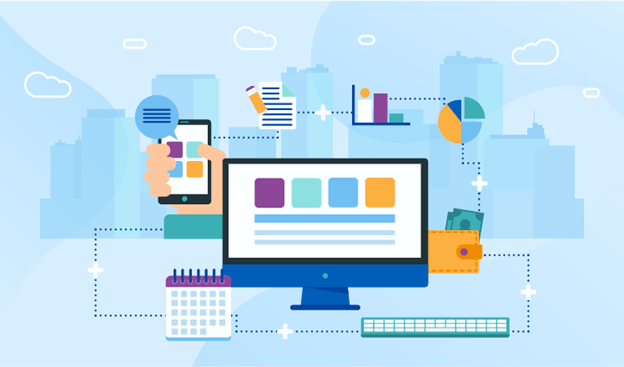
As companies grow, they need to simplify processes and improve efficiency, from accounting and supply chain, customer service to analysis. The manual integration of information gets more complicated as companies expand and use various application software to improve data management and efficiency owing to the extensive paperwork. For this reason, many businesses use business application integration to automate data interchange, acquire insights and simplify workflows.
Application integration allows independently designed apps and systems to operate together and to create new skills and optimizations which save costs, open up insights and much more. The integration of your apps automates your business operations, enabling your workers to concentrate on creating value for other areas of your company. People don’t need to transcribe data across apps, which saves a lot of time. New methods of integration have developed today and coexist with older types of integration that have existed for years.
In a typical corporate environment, apps reside in silos, meaning they run in distinct business units or functions independently of one other and do not exchange data they need. In these situations, people have to work together manually by transferring data across unconnected apps, which takes time and is highly error-prone. But when your apps are linked, obstacles to smooth working across them are eliminated. Furthermore, when we speak about application integration, we use enterprise application integration (EPI). Let us understand what enterprise business integration is and how it helps the business sector.

What is EAI (Enterprise Application Integration)? Explained!
Enterprise Application Integration (EAI) is described as unfettered sharing across any linked applications and data supply inside the company of data and business processes. It is seen as a framework consisting of a combination of technological innovations that create a middle-class software that integrates various enterprise systems such as legacy systems, company resource planning systems and best-of-breed enterprises.
EAI is a method to bridge inefficiencies in communication across different companies’ applications. The goal is to build a strong company infrastructure with simple data flow from one program to the next.
Enterprise applications are essential to different contemporary organizations’ operations and thus their integration is even more important for streamlining all activities and ensuring the seamless working of enterprise-level activities. Applications are merged into a single platform and must be incorporated with data backgrounds so that the integrated applications operate smoothly. EAI enables operating system modifications, data formats and languages which hinder the compatibility of different components. Several techniques are utilized for EAI to work. EAI focuses on application-level integration (application layer). Increased independence from the lower levels of the information system including operating systems, databases and, last but not least, associated providers was the benefit of EAI.

Benefits of Implementing Enterprise Application Integration
The integration of business applications has become a key issue in our highly competitive environment. The broad philosophies and methods surrounding this notion demonstrate that corporate data integration solutions were really important.
Controlled Environment
One of the main benefits of EAI is that it enables the information flow to be controlled. It enables universal access and exchange among all data and components, standardized or asynchronous, of the information system. The many methods in EAI will provide comprehensive integration information that allows the business to be completely controlled. The whole network may be monitored and regulated, spanning from software information to employee-related elements.
Efficiency and Streamlining of Data
By simplifying business processes, the integration of enterprise applications improves the overall efficiency of the company. It helps facilitate communication, saves time and effort, improves functioning and control. In addition, it may assist businesses to handle the shift in market trends, manage their reputation and problems linked to supply chain interruptions and more. When various components of a business and their applications and IT structures are linked, the flow of information is considerably larger.
All business workers may access the data and applications they utilize. This eliminates duplication of information so that the structure functions better and efficiently.
Automation
The EAI platform enhances the overall automation of business operations and provides users and consumers with fast and accurate information. It also fills the gap across two distinct systems, allowing data to flow easily across applications. It ultimately improves company operations and increases financial workflow transparency. For example, you may use CRM customer data to launch an email marketing campaign and generate reports to evaluate its effectiveness. The EAI platform simplifies corporate operations and increases financial flow transparency.
Reduced Time and Cost
The use of EAI technology also helps the business to save expenses. The combination of both old and new software is a clear illustration of this: because no one has to remove the first, there are fewer investments. In addition, new services and products may be created internally and externally due to such integration of business applications. In the long term, this helps to save at all costs. EAI helps to reduce significantly the time required to incorporate new data or restructure procedures. It adapts the information system to the operational or strategic needs of the business. In addition, it links two or more platforms. The information present in one platform is thus accessible via the other systems intended for integration.

Flexibility & Agility
The integration of software enables businesses to quickly build IT facilities and meet the increasing consumer demands in good time. When it comes to communication inside the company, there are difficulties when workers who are not so technologically skilled as others have to perform technical duties. They confront problems in controlling the IT-based structure. With larger companies, it may be tough for managers to take control of the IT structure in a business where they cannot effectively use new technology. EAI helps to overcome these obstacles. Moreover, effective time data, updates, provided according to defined business standards, substantially enhance management efficiency and speed of decision-making. It enables companies to react quickly and take advantage of new possibilities.
Reduced Errors
For all applications utilized, EAI offers consistent master data. This reduces mistakes substantially, which may occur owing to erroneous information obtained by various individuals. It also helps to remove repeated activities, mistakes and potential bottlenecks within business processes immediately.
Improved Functionality
The higher the employee workability, the quicker the whole process of any company will be. These business apps will provide workers full pleasure to work and will certainly encourage the smooth running of the whole company.
Competitive on a Global Level
A company requires several technologies to seize the possibilities of the market and remain ahead of the competition. Poor infrastructure and technology may result in poor or lower productivity, which can lead to losses for a business. Sometimes the absence of technology may lead to the closure of a company. Implementing the EAI enables a company to explore various possibilities and investigate what works for the business. It enables companies to compete positively throughout the market and remain ahead of their rivals.
EAI improves the capacity to address business issues. With the removal of issues, an enterprise improves efficiency and performance.
Multiple Opportunities
In current times, every company organization must understand the many possibilities that may enable them to move their gears to another level. Many companies now fail because they may not have the right software, strategies and an insubstantial process. EAI improves monitoring and streamlining so that business issues are easily identified. The EAI offers a simple mechanism and strategies that enable workers to recognize and react to excellent times.
The integration of enterprise applications offers information on management problems, the reputation of the business and any changes in marketing policy. With this knowledge, a company may align itself and expand.

Disadvantages of Enterprise Application Integration
Like all other systems, it does have several cons attached to it as well.
Unknown Accountability
Many businesses have ambiguous responsibility since corporate integration needs to transcend company boundaries, involve partners, and even affect consumers. As an example, when a time problem exists, it needs to be tackled in a coordinated way that combines both business and IT capabilities. Furthermore, apps whose data are occasionally included belong to several departments with cultural, technological and political reasons to prohibit their data from being shared with certain other departments.
Vendor Independence
Vendors may stray from conflicting specifications and various standard bodies such as web services. In addition, these standards organizations frequently engage vendors quite a lot, and merchants may decide to pursue their agendas. Since standards cannot ensure compatibility, businesses should depend on standards for testing and validation. When replaced by other brand apps, business policies or regulations on particular business applications don’t have to be re-implemented.
Undergoes Changes
EAI often requires modifications in many components and spreads throughout value chains as an integrated business process within businesses. Budgeting after a specific project leads to difficulties when service standards are increased and numerous needs after deployment are met, which is why businesses should generate a post-project investment that enables more than basic maintenance.
The skill of EAI is rare:
The market suffers from a shortage of capabilities in view of sophisticated EAI parallel processing and data combinations that may confuse programmers and other employees using a direct line method. In addition, third-party vendor route companies should be mindful of their disadvantages. Local language, transfer of knowledge and contingencies should also be addressed.
Different Models for Enterprise Application Integration
The five basic EAI models are:
Point to point Integration
Point-to-point links utilized a script for extracting, translating and translating data from one format to another. This has been successful in relatively modest operations but is ineffective in the management of multiple systems.
Hub and Spoke Integration
The Hub and Speaker architecture utilize a central hub wherein the applications and systems interact through “speakers.” This technique reformats and distributes information from one database, avoiding the need to link subsystems.
Bus Integration
The bus integration technique is an evolved hub-and-speaking paradigm in that it does the same duties but executes different architectures. Within each application, the bus technique accomplishes integration. This allows the transmission and retrieval of data in accordance with each service’s regulations.
Middleware
Middleware is software that controls data between interfaces and systems. This facilitates the aggregation of data across all services since it makes it possible to transfer the information.
Micro-services
The most common usage of micro-service models is in companies that employ cloud-based applications. Companies may retrieve and transmit data to all services via an application program interface (API). APIs also include various encryption layers to guarantee that data is sent and delivered securely.

Better Ways to Do Application Integration
The number of apps a company has to integrate increases every day. Application integration as well as API solutions can quickly and effectively link your SaaS and best-of-breed companies. A streamlined flow of information and real- time visibility, which includes and benefits the corporate application integration platform, offers greater advantages than prior one-off and bespoke methods via pre-built application connections.
NetSuite Peregrine Connector enables you to integrate your businesses effectively with the NetSuite ERP, CRM, PSA and eCommerce solutions – on-site and in the cloud, both on your key platforms, systems and apps.
FAQS
What is an enterprise application integration system?
Enterprise app integration (EAI) is responsible for connecting the databases and business applications processes to guarantee that the business utilizes relevant information consistently, so these changes to key business information made by one application are properly reflected in other applications.
How does enterprise application integration work?
EAI provides a business solution that simplifies information across different program, making it easy to connect them as necessary.
Why is enterprise application integration important?
Enterprise apps are software program which may be hosted on-site, on public/private cloud servers, or operated by third-party companies. And, with more and more cloud apps in a business, a hybrid integration architecture emerges to maximize both kinds of applications. Initial and continuing IT expenses are reduced and value is maximized over time.
What are the different components of enterprise application integration?
· Application connectivity
· Integration modules
· Transactional support
· Data format and transformation
Conclusion
Integration of enterprise applications helps in company efficiency and process automation. Adequate communication among these apps is nevertheless vital to the efficient operations of the business. The integration and adaptation of apps is important to the development strategy of an organization. They may add new clients to our system without administrative resources being mobilized. Company application integration solutions contribute to improving the performance of companies that meet their business objectives.


